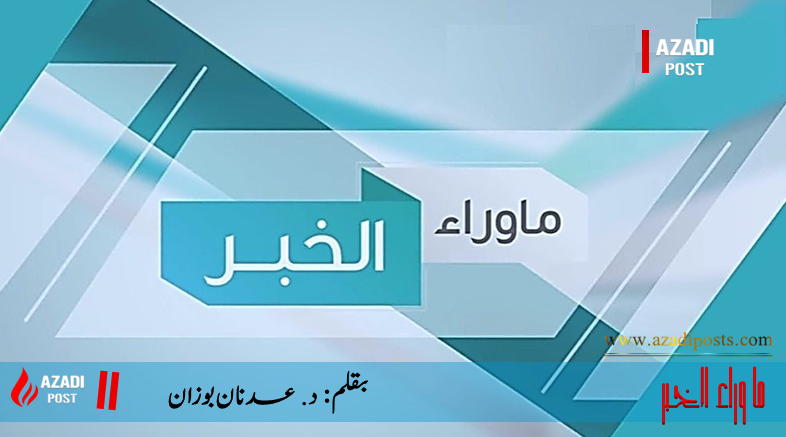
By Dr. Adnan Bozan
On April 26, a significant Kurdish initiative took place in the city of Qamishlo: the "Kurdish Conference." It stood out as one of the most notable attempts by Syrian Kurds to shape a unified national project. The event brought together two traditionally rival political forces—the Democratic Union Party (PYD) and the Kurdish National Council (ENKS)—despite the limited nature of Kurdish consensus. The conference also witnessed the presence of representatives from the United States, France, and the Kurdistan Region of Iraq. On the surface, it may appear to be just another political gathering, but at its core, it represents an effort to reshape the Kurdish political map in Syria at a critical juncture of political and military transformation.
- Timing and Location: More Than Mere Details
Holding the conference in Qamishlo, the de facto capital of the Autonomous Administration, and with international and regional participation, is far from a trivial choice. It is a clear declaration that the Kurdish issue in Syria is no longer an isolated local matter, but has become part of a complex web of regional and international equations. The timing is particularly significant amid increasing talk of a possible Syrian transitional phase led by the so-called "interim president Ahmad al-Shar’a"—a symbolic name for Abu Muhammad al-Julani, leader of Hay'at Tahrir al-Sham, which is designated as a terrorist organization. This places the conference in direct confrontation with alternative political trajectories that do not even recognize the Kurds as an equal political party.
- Content of the Conference: A Step Toward Kurdish Unity
Despite the historical hostility and deep-rooted conflicts between PYD and ENKS, their sitting at one table, and the emergence of outcomes aimed at sharing influence, unifying political discourse, and rebuilding trust, marks a rare political breakthrough. These outcomes could represent the early contours of a unified Kurdish representation in future local and international negotiations about Syria’s fate. This development poses a dual threat to both the structure of the new regime and to Arab nationalist and Islamist opposition forces alike. It challenges the Sunni Arab monopoly over both governance and opposition, while simultaneously rejecting centralism, dictatorship, and asserting the notion of Syria as a multi-ethnic, decentralized, secular parliamentary state.
- Rejection by the "Ahmad al-Shar’a Government": What Does It Mean?
As soon as the conference outcomes were announced, they were met with outright rejection from the so-called "Ahmad al-Shar’a Government"—i.e., the authority of Hay'at Tahrir al-Sham, which is attempting to rebrand itself as a moderate political entity. This rejection cannot be separated from the ideological transformations within the Islamist armed opposition, which—though having stepped into the political realm—still operates from an exclusionary Sunni Islamist nationalist worldview.
This rejection is based on two core dimensions:
- Ideological: These groups reject any form of self-governance or federalism, and outright deny the legitimacy of ethnic pluralism.
- Geopolitical: The Kurdish forces in northern and eastern Syria are allied with international powers (such as the U.S.), and are perceived by these Islamist groups as traitors or a direct threat to their authoritarian project.
- Expected Outcomes of the Conference and the Rejection by the al-Shar’a Government
- The partial revival of hope for Kurdish unity, paving the way for a Syrian Kurdish bloc with internal and external legitimacy.
- Strengthening Kurdish presence in upcoming local and international negotiations, especially as unified Arab representation wanes and local forces rise.
- Escalation of political (and possibly later, security) confrontations between Kurdish forces and extremist Islamist factions seeking to reinvent themselves within an alternative governance project.
- Advancement of the case for international recognition of the Kurdish component in Syria as a legitimate political actor that cannot be ignored in the country’s future.
- Increased tension between Turkey and the international community if the conference is perceived as a step toward federalism—something Ankara sees as a threat to its national security.
Conclusion: Kurds on the Verge of a Strategic Shift
What happened in Qamishlo is not just an internal Kurdish event; it is a preemptive move to reposition the Kurds within Syria's future equation. Long marginalized in both regime and opposition structures, the Kurds are now asserting themselves through alliances, ground realities, and a strategic vision of self-rule. However, the outright rejection by Ahmad al-Shar’a—and with him, all forms of political Islamism—reminds us that the battle is far from over. It has merely entered new phases of denial, co-optation, and indirect confrontation.
So, is this Kurdish rapprochement the beginning of a historic transformation, or just a temporary political maneuver imposed by the necessities of the moment?